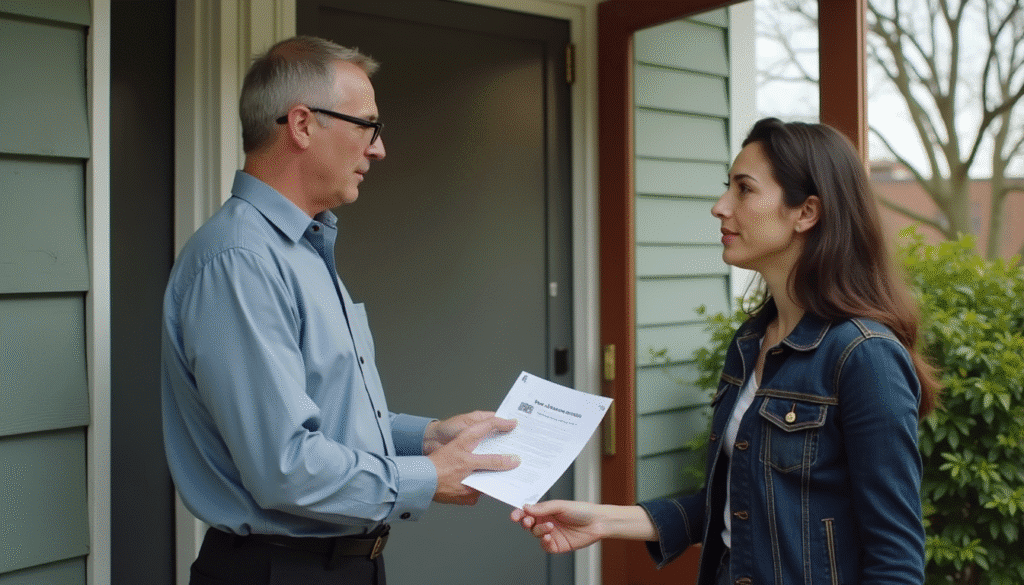In this article, we will explore the intricacies of Lease Terminations, covering everything you need to know as a tenant or landlord. Understanding the legal aspects of lease terminations is crucial for protecting your rights and obligations.
Understanding Lease Agreements
A lease is fundamentally a legal contract binding tenants and landlords. It outlines the terms and conditions under which a tenant may occupy a rental property. Key components of a lease include:
- Duration: The length of time the lease is valid, often one year.
- Rent Amount: The monthly payment due from the tenant to the landlord.
- Security Deposit: A sum held by the landlord to cover potential damages or unpaid rent.
Understanding these terms is essential for both parties to ensure compliance and avoid disputes.
Tenant Right to Terminate a Lease
Tenants may have legitimate reasons for terminating a lease early, including:
- Health Violations: If the rental property poses health risks (e.g., mold, pest infestations), tenants may have grounds to terminate their lease.
- Safety Code Breaches: Violations of safety codes can also justify early termination.
- Personal Circumstances: Situations such as military deployment or domestic violence may allow tenants to break their leases without penalties.
It’s vital for tenants to document any issues and communicate with their landlords promptly.
Constructive Eviction Explained
Constructive eviction occurs when a tenant is forced to leave a rental property due to the landlord’s failure to maintain livable conditions. This can include:
- Severe Repairs Needed: If essential services like heating or plumbing are not maintained, tenants may claim constructive eviction.
- Unsafe Living Conditions: Issues like lack of security or exposure to hazardous materials can also qualify.
Tenants must provide evidence of these conditions and may need to give notice before vacating.
Landlord’s Duty and Responsibilities
Landlords have specific responsibilities when a tenant breaks a lease:
- Duty to Mitigate Damages: Landlords must make reasonable efforts to re-rent the property. This means actively seeking new tenants rather than allowing the unit to sit vacant.
- Advertising Costs: Any costs incurred in re-renting can often be charged to the vacating tenant, depending on lease terms.
Understanding these duties helps landlords protect their interests while complying with legal obligations.
Handling Security Deposits
Security deposits are a common point of contention in lease terminations. Here’s how they should be handled:
- Return Timeline: Landlords typically have 14 to 30 days after a tenant moves out to return the security deposit.
- Valid Deductions: Landlords can deduct for damages beyond normal wear and tear, but must provide an itemized list of deductions.
- Documentation: Both parties should keep records of communications regarding security deposits, including any agreements reached about deductions.
Failure to follow proper procedures can lead to legal disputes.
Legal Grounds for Landlord Lease Termination
Landlords can legally terminate a lease under various circumstances:
- Lease Violations: Significant breaches, such as repeated late payments or unauthorized pets, can justify termination.
- Illegal Activities: Engaging in illegal activities on the premises (e.g., drug use) provides grounds for immediate termination.
Landlords must provide proper notice according to state laws before proceeding with termination.
Eviction Process Overview
If a tenant does not vacate after receiving a termination notice, landlords may initiate eviction proceedings. The process typically involves:
- Filing an Eviction Lawsuit: The landlord files a complaint in court.
- Tenant’s Response: The tenant has an opportunity to respond within a specified timeframe.
- Court Hearing: A hearing is scheduled where both parties present their cases.
- Judgment: If the court rules in favor of the landlord, an order for eviction is issued.
Understanding this process helps landlords navigate potential legal challenges effectively.
FAQs About Lease Terminations
What is constructive eviction?
Constructive eviction occurs when a tenant is forced to leave due to unlivable conditions caused by the landlord’s negligence.
Can I terminate my lease without penalty?
You may terminate your lease without penalty if you have legally protected reasons such as health issues or domestic violence. Always document your situation and notify your landlord in writing.
How long does a landlord have to return my security deposit?
Landlords typically have 14 to 30 days after you move out to return your security deposit, depending on state laws.
What should I do if my landlord refuses to return my deposit?
If your landlord fails to return your deposit within the required timeframe, send them a written request for its return. If they still do not comply, you may need to consider legal action.
Additional Insights on Lease Terminations
To provide a more comprehensive understanding of Lease Terminations, we will delve deeper into various aspects that can enhance the value of this article for readers. This includes exploring specific procedures, potential pitfalls, and additional resources that can assist both tenants and landlords during the lease termination process.
Differences Between Lease Agreements and Rental Agreements
Understanding the distinction between lease agreements and rental agreements is crucial.
- Lease Agreements: Typically cover a fixed term of one year or more. They provide stability for both parties but can be challenging to terminate early without penalties.
- Rental Agreements: Generally month-to-month, allowing for more flexibility. Tenants can terminate these agreements with shorter notice periods, often 30 days.
This knowledge helps tenants choose the right type of agreement based on their needs and circumstances.
Detailed Notice Requirements
Notice requirements are a critical component of lease terminations. Each state has specific laws governing how much notice must be given before terminating a lease.
- Written Notice: Most jurisdictions require written notice to ensure there is a record of the communication. This notice should clearly state the intention to terminate, the reason (if applicable), and the date by which the tenant will vacate.
- Delivery Methods: Notices can typically be delivered in person, via certified mail, or through electronic means if permitted by the lease agreement.
Understanding these requirements helps prevent disputes over whether proper notice was given.
Grounds for Early Termination
Tenants may have legally protected reasons for terminating a lease early, which vary by jurisdiction:
- Domestic Violence: Many states allow victims of domestic violence to terminate their leases without penalty.
- Military Duty: Under the Servicemembers Civil Relief Act (SCRA), active-duty military personnel can terminate leases when called to active duty.
- Uninhabitable Conditions: If a rental unit is deemed uninhabitable due to significant health or safety violations, tenants may have grounds for termination.
Being aware of these protections empowers tenants to act within their rights.
Procedures for Landlords to Terminate a Lease
Landlords must follow specific legal procedures when terminating a lease:
- Grounds for Termination: Valid reasons may include non-payment of rent, lease violations, or property damage.
- Notice Requirements: Landlords must provide tenants with written notice detailing the reason for termination and any actions required (e.g., paying overdue rent).
- Eviction Process: If tenants do not vacate after receiving notice, landlords may need to file an eviction lawsuit, which involves court proceedings.
Understanding these steps ensures landlords act lawfully and protect their interests.
Security Deposit Handling
The return of security deposits is often contentious during lease terminations:
- State Regulations: Laws vary by state regarding how quickly landlords must return deposits (typically within 14 to 60 days) and what deductions are permissible.
- Documentation: Landlords should document the condition of the property at move-out through photos and inspection reports to justify any deductions from the security deposit.
Providing transparency in this process can help mitigate disputes over security deposits.
Common Pitfalls in Lease Termination
Both tenants and landlords should be aware of common pitfalls that can complicate lease terminations:
- Failure to Provide Proper Notice: Not adhering to notice requirements can lead to legal complications and financial penalties.
- Ignoring Lease Terms: Both parties must review their lease agreements carefully to understand their rights and obligations regarding termination.
- Lack of Documentation: Failing to keep written records of communications and agreements can lead to misunderstandings and disputes.
By being proactive about these issues, both parties can navigate lease terminations more smoothly.
Resources for Assistance
For further assistance with lease terminations, consider consulting:
- Legal Aid Organizations: Many offer free or low-cost legal advice regarding landlord-tenant issues.
- State Housing Authorities: These agencies provide information on tenant rights and landlord obligations specific to your area.
- Real Estate Attorneys: For complex situations, hiring an attorney specializing in landlord-tenant law can help protect your interests effectively.
Conclusion
By incorporating these additional insights into our discussion on Lease Terminations, we aim to equip both tenants and landlords with valuable knowledge that enhances their understanding of the process. This comprehensive approach not only clarifies legal obligations but also helps prevent common pitfalls that can arise during lease termination.






